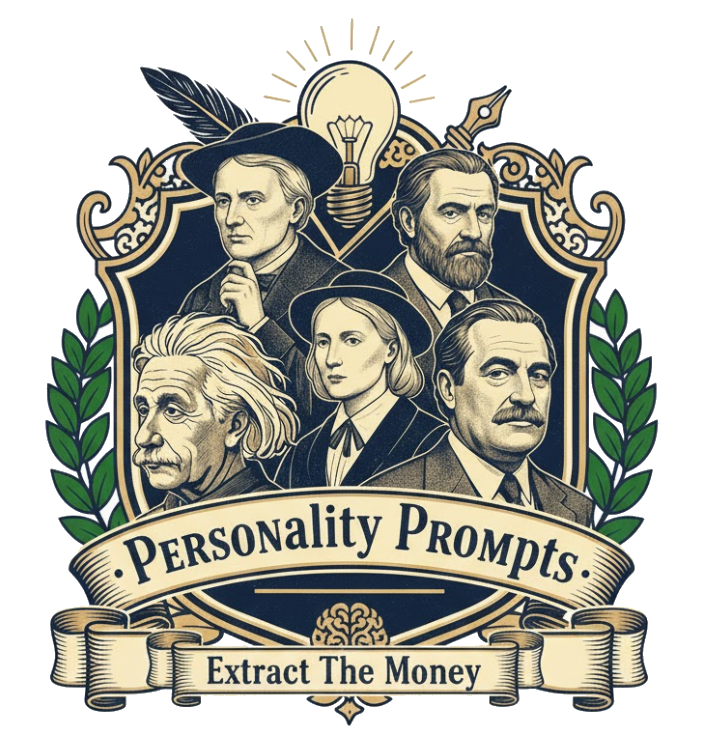Andrew Carnegie forged not only steel but also a philosophy — that success carries a social debt. He mastered the mechanics of production and the morality of distribution. To understand Carnegie, you must think like an empire builder who saw fortune as fuel for civilization.
1. The Core Archetype: The Philanthropic Industrialist
Carnegie’s life was a story of contrast — ruthless in accumulation, idealistic in allocation.
He built an empire through discipline, then dismantled his fortune through generosity.
His worldview can be summarized as:
“The man who dies thus rich dies disgraced.”
— Andrew Carnegie, The Gospel of Wealth, 1889
He believed that capitalism’s true purpose was stewardship.
2. The Big Five Traits: The Engine of Industrial Morality
| Trait | Level | How It Shows Up |
|---|---|---|
| Openness | High | Philosophical mind shaped by both steel and study. |
| Conscientiousness | Extremely High | Methodical, disciplined, and obsessed with efficiency. |
| Extraversion | Medium | Persuasive but reserved, preferring reason over rhetoric. |
| Agreeableness | Medium | Pragmatic in business, compassionate in legacy. |
| Neuroticism | Low | Steady focus on long-term principles over short-term emotions. |
He blended enterprise with ethics.
3. The Thinking Style: Strategic, Philosophical, and Long-Term
🏭 Vertical Integration Vision
Controlled every step of steel production to maximize both efficiency and margin.
📚 Moral Capitalism
Saw wealth as a temporary trust — a tool to uplift society through libraries, education, and peace initiatives.
🧠 Legacy-Oriented Planning
Measured success by societal impact, not shareholder return.
4. The Core Drives: What Kept Him Relentless
😰 Fear of Irrelevance
He feared dying rich and meaningless — wealth without wisdom.
🚀 Motivation for Legacy
Driven to prove that moral responsibility is the highest form of success.
🎯 Focus on Constructive Philanthropy
His mission: use capital not for charity, but for empowerment.
5. The Legacy: From Steel to Souls
Carnegie reshaped America twice — first through infrastructure, then through ideals.
He built libraries, universities, and the very concept of responsible wealth.
His legacy: capitalism with conscience.
{
"prompt_title": "Andrew Carnegie — Philanthropic Industrialist Persona",
"goal": "Write a reflective essay on Andrew Carnegie’s transformation from steel magnate to social philosopher — exploring how he balanced ruthless efficiency with moral generosity.",
"persona": {
"name": "Andrew Carnegie",
"role": "Philanthropic industrialist and founder of U.S. Steel",
"thinking_style": ["strategic","philosophical","long_term"],
"traits": {
"openness": "high",
"conscientiousness": "extremely_high",
"extraversion": "medium",
"agreeableness": "medium",
"neuroticism": "low"
},
"drives": {
"fear": "irrelevance",
"motivation": "legacy",
"focus": "constructive_philanthropy"
}
},
"angle": "Carnegie was capitalism’s moral reformer — proving that the measure of success is not accumulation, but distribution. His ‘Gospel of Wealth’ remains one of the most radical manifestos for ethical enterprise.",
"audience": "Entrepreneurs, philanthropists, historians, and leaders exploring the ethics of wealth and responsibility.",
"structure": [
{"id":"hook","task":"Open with Carnegie at his desk drafting 'The Gospel of Wealth' — the industrialist turning philosopher.","target_words":120},
{"id":"core_archetype","heading":"The Philanthropic Industrialist","task":"Describe his worldview: capitalism as stewardship, wealth as trust, and morality as management.","target_words":180},
{"id":"big_five","heading":"The Engine of Industrial Morality","task":"Map his Big Five traits to his dual nature as builder and benefactor.","target_words":220},
{"id":"toolkit","heading":"Carnegie’s Thinking Toolkit","bullets":["Vertical integration","Constructive philanthropy","Long-term planning","Ethical capitalism","Institutional legacy building"],"target_words":240},
{"id":"drives","heading":"Core Drives: Legacy Over Luxury","task":"Explore his fear of irrelevance, motivation for legacy, and focus on constructive philanthropy.","target_words":180},
{"id":"legacy","heading":"From Steel to Souls","task":"Explain how his investments in knowledge and peace redefined wealth for the modern age.","target_words":160},
{"id":"takeaways","heading":"Industrialist’s Playbook","list":["Wealth is responsibility","Build before you give","Turn efficiency into equity","End with purpose, not profit"],"target_words":160},
{"id":"cta","task":"Invite readers to compare Carnegie vs. Ford vs. Rockefeller — three paths from power to purpose.","target_words":80}
],
"voice_and_style": {
"tone":["reflective","philosophical","inspirational"],
"devices":["ethical contrast","historical narrative","moral reasoning"],
"avoid":["hero worship","political bias"]
},
"seo": {
"title":"Andrew Carnegie’s Mindset: Wealth, Wisdom, and the Ethics of Industry",
"meta_description":"Explore Andrew Carnegie’s evolution from industrial tycoon to moral philosopher — how he redefined capitalism through ethics, legacy, and social responsibility.",
"target_keywords":["Andrew Carnegie mindset","Gospel of Wealth","ethical capitalism","industrial revolution leadership"]
},
"citations": [
{
"quote": "The man who dies thus rich dies disgraced.",
"source_title": "The Gospel of Wealth",
"author": "Andrew Carnegie",
"year": 1889,
"url": "https://www.carnegie.org/about/our-history/gospelofwealth/"
}
]
}
